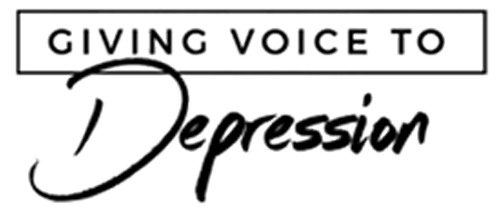” Depression is recurring and cyclic. What we have is treatments, not cures. You’re never really free of it; you are always living in the shadow of it. You always have to be prepared for a recurrence and be ready to stave it off.”
Andrew Solomon, author of The Noonday Demon
Relapse prevention is a critical part of recovery from depression. Surviving an episode of depression is not like having the measles—one does not develop an immunity to the disease. Although the symptoms of depression can be controlled, the underlying predisposition does not go away. While it is true that some individuals experience just one major depressive episode in a lifetime, half of those who have been severely depressed are at risk to become depressed again.
What can a person do to decrease the likelihood of having another depressive episode? The first step is realize that recovering from depression is not a one-time event but an ongoing process. While utilizing the tools of the better recovery mood program can help our brains and nervous systems to stay well, there are times when powerful external stressors or internal biochemical anomalies will disrupt the brain’s delicate balance. In such instances, we need a plan for identifying and responding to symptoms before they get out of hand and lead to another breakdown. This process of nipping depression in the bud is known as “relapse prevention.”
Relapse prevention can be compared to steps in fighting off a cold. When you first feel yourself coming down with a cold or flu, the proper response is to drink tea, take vitamin C and rest. If, however, you ignore these early warning signs and continue with your busy life, the cold might enter your lungs and turn into bronchitis. If you continue to ignore your body’s cry for help, the infection may penetrate deeper into the lungs and become pneumonia. If the case is serious enough, you’ll have to be hospitalized.
In a similar manner depression can easily “sneak up on you” if you are not paying attention. Fortunately, having a depressive breakdown does not occur overnight. Clinical depression is a gradual process of falling out of recovery, ultimately leading to the inability to function. By regularly monitoring the state of your body, mind and spirit, it is possible to identify relapse symptoms early on and take action to prevent a return to major depression. In addition, you may want to ask a good friend or family member to monitor your moods, since an objective person may be able to spot the return of symptoms from the outside before you can.
Identifying Relapse Triggers
Relapse prevention involves identifying particular stressors (which I will call triggers) that can initiate the symptoms of anxiety and depression. Triggers can manifest as thoughts, events, or situations. An example of a trigger for a compulsive overeater would be a slice of chocolate cake; for an alcoholic, it would be finding himself in a bar and offered a free drink; for a compulsive gambler, it would be playing a game of video poker.
Each of us has our own unique set of triggers. Some of these triggers can be linked to traumatic events from the past. The most powerful trigger seems to be loss. Relationship break-ups, divorce, the death of a parent, the death of a grandparent, and even the loss of a pet have the potential to send us spiraling downward into depression. Humans are intensely social animals, and our desire for connectedness is both our greatest strength and our greatest vulnerability.
Another way to do to understand triggers is to use the acronym HALT, which stands for hungry, angry, lonely and tired. (This term comes from the recovery movement.) Whenever a person is hungry, angry, lonely or tired, he or she is more likely to reach for booze or drugs. For people who suffer from a mood disorder, being overly hungry, angry, lonely and tired can make them more vulnerable to experiencing symptoms of anxiety or depression.
Finally, remember that stress of any kind is a potential trigger for relapse. Thus, it is important to regularly practice ways to reduce your stress.
Avoiding Triggers
An excellent relapse prevention strategy is to stay away from circumstances that have the potential to serve as triggers. Here are some situations that my clients say they try to avoid.
- violent movies
- extreme heat (e.g. being in a car on a hot day)
- eating sugar when feeling blue
- taking on too many projects
- being around argumentative people
- losing sleep
Recognizing and Responding to Triggers
Once you know what your triggers are, your job is to be on the lookout for the return of the symptoms of anxiety and depression when the trigger gets activated. These symptoms occur in three stages:
- early warning signs
- the beginning of a crisis (the onset of moderate symptoms)
- a full blown crisis (the onset of severe symptoms which can lead to a breakdown)
Stage 1: Early warning signs
Early warning signs are those subtle changes of thinking, feeling, and behaving that indicate a worsening of your condition. While they are usually associated with a triggering event, they may also come “out of the blue.” Often they go unnoticed because they are subtle, or because the person is not paying attention.
Here is one example. A few weeks ago, a friend who in recovery from a bipolar disorder, looked more tired than usual.
“You look a bit beat,” I observed.
“Well, to tell you the truth, my sleep cycles have been a bit off,” Sam replied. I became suspicious and upon further questioning I learned that Sam wasn’t getting to sleep until three in the morning. Given the fact that sleep disruption is often a prelude to a manic episode, I told Sam that his sleep irregularities should be dealt with as soon as possible.
One way to stay in touch with yourself is to track your daily moods using a 1 to 10 rating scale, with 1 representing severe depression and 10 depicting total joy. As long as your ratings remain between a 4 and 6, you are experiencing normal fluctuations in mood. If, however, they creep below 4, and remain there for more than a week, you are in mild danger of relapse. If this occurs, you can implement the following coping strategies: (If a clear external stressor such as a divorce or other major loss is evoking this pain, you may not be suffering from clinical depression, but should still take these steps.)
- Check to see that your daily exercise regimen has not lapsed. If it has, get back on your schedule.
- Check to see that your diet and sleep cycles are normal.
- Make an appointment with your therapist. Discuss any significant stressors you may be experiencing such as domestic conflicts, problems at work, health challenges or financial worries.
- Do something nurturing for yourself (take the day off, spend time in nature, get a loving massage, hang out with a good friend).
Stage 2: The beginning of crisis—things are breaking down
Despite your best efforts, your symptoms may progress to a point where they begin to interfere with your normal ways of functioning. In such a case, you would find your symptoms would register a 3 or less on the daily mood scale. Rather than “tough it out,” now is the time to reach out for support. Here are some good ways to take care of yourself:
- Call your psychiatrist or prescriber so that your medication can be evaluated and possibly adjusted.
- Call your therapist/counselor for an emergency session.
- Call your support team to let them know you are in crisis.
- Take three days off from responsibilities.
- Have a friend come over and stay with you until you symptoms diminish.
- If you are open to prayer, call one of the telephone prayer ministries listed on this web site.
- Do something nurturing for your physical body, such as going on a long walk, practicing yoga, or taking a bath or a jacuzzi.
- Monitor your thoughts. If you are beginning to catastrophize, tell yourself that with the right support, you can make it through this period.
Stage 3: Major Crisis — The Symptoms Become Extreme
Stage 3 takes place when the symptoms of Stage 2 have not been successfully resolved and you are beginning an episode of clinical depression or panic disorder. The numbers on your daily mood scale are likely to be close to 2 or 1.
Ideally, you should take the same actions that were outlined in Stage 2—i.e., enlisting your support team to help you deal with your crisis. However, your symptoms may have become so disabling that others may need to take responsibility for your care and make decisions for you. (This is what occurred during my last episode when my wife and friends decided that I needed to be hospitalized.)
Take a moment and consider one or more people whom you would trust to act on your behalf if you became disabled by severe psychiatric symptoms. In the next few days, ask them if they would like to become your supporters and advocates in the event of a relapse. Good candidates include a primary care mental health professional, a family member, or a good friend. (You will have the opportunity to write their names and numbers in your personalized relapse prevention plan below.)
In addition, you might ask one of these people to monitor your moods and behaviors on a regular basis when you are well. Since we don’t always see ourselves with 20/20 vision, an objective observer may be more adept at noticing the early warning signs of relapse and reporting those changes to you.
Creating a Personalized Relapse Prevention Plan
Answering the questions that follow will help you to identify the thoughts and behaviors that are your personal warning signs of relapse. They will also help you to specify actions you can take once you become aware of those warning signs.
1. What are the warnings that indicate that you are becoming depressed or anxious?
2. When you notice theses warning signs, what actions might you take that will even out your mood? Some of these responses were listed in the previous pages.
3. Whom can you call or talk with in order to get support? Whom will you share your relapse warning signs with? Please list (if you can) three or more people below.
Name Phone
a. ______________________________ ______________________________
b. ______________________________ ______________________________
c. ______________________________ ______________________________
Name Phone
a. ______________________________ ______________________________
b. ______________________________ ______________________________
c. ______________________________ ______________________________
4. Sometimes others spot relapse warnings signs in us before we do. How would you respond if others express concern that you are in danger of relapse?
5. What are your personal “triggers”—those thoughts, events or situations that can initiate symptoms of depression or anxiety?
6. What steps can you take to reduce the chance of being depressed an anxious in those situations?
7. Is it possible to avoid such triggers altogether? How might you do so?
8. What are some of your old ways of thinking (cognitive distortions) that you have seen produce feelings of depression or anxiety?
9. What are some new thoughts or beliefs that you can use to challenge those old ways of thinking?
10. Are there any changes you could make in your daily activities that would reduce the risk of relapse?
11. What areas of your life are you still working on in your ongoing recovery work?





